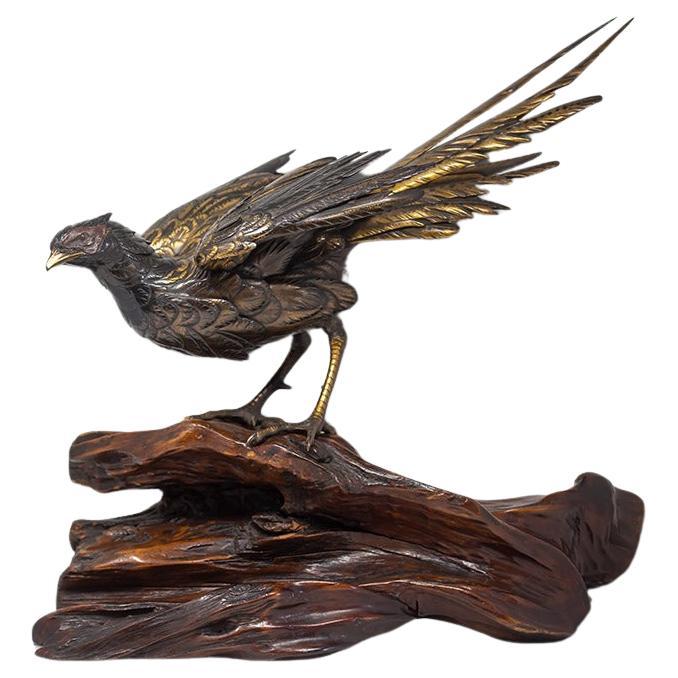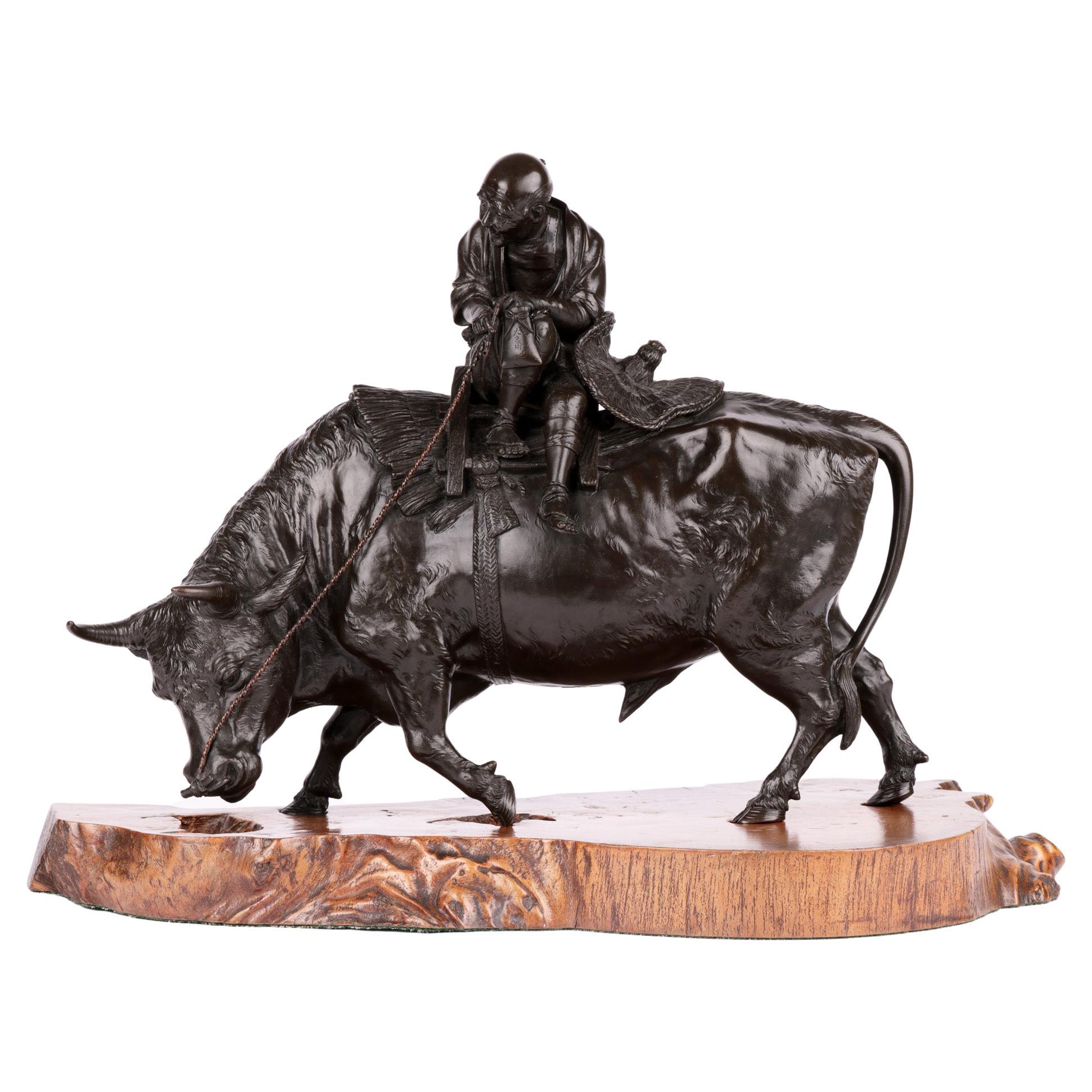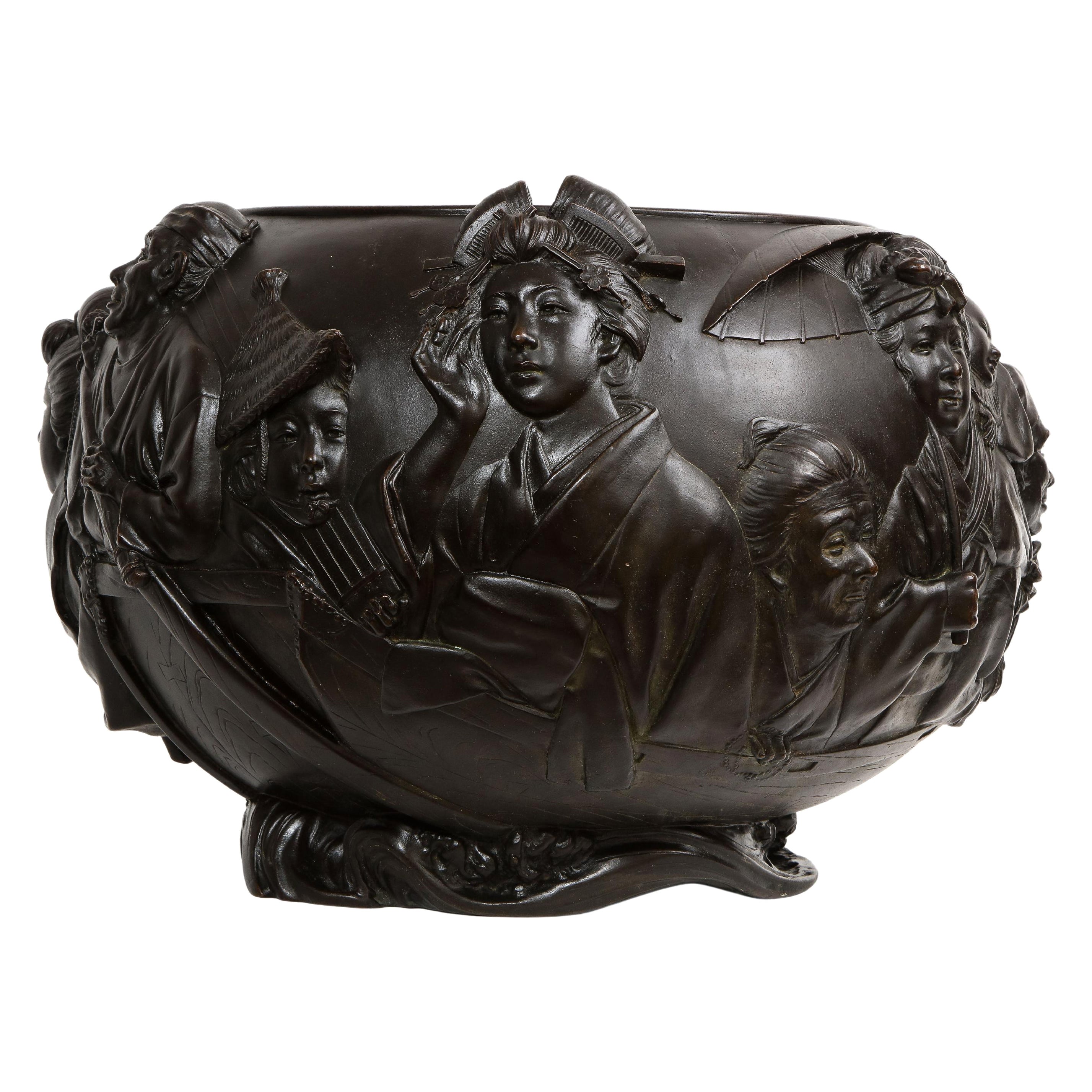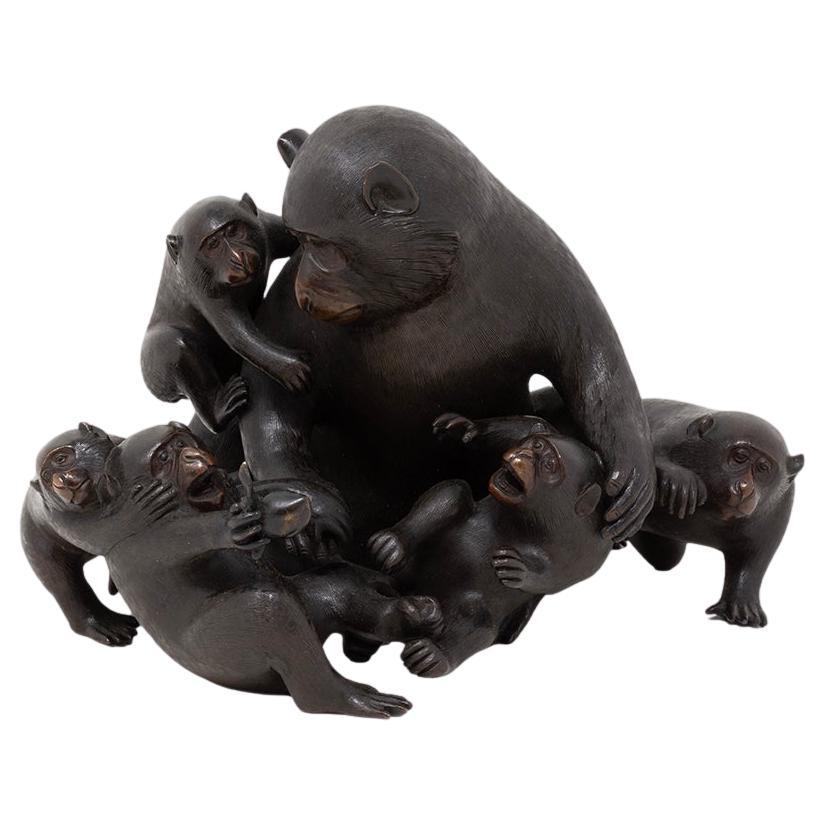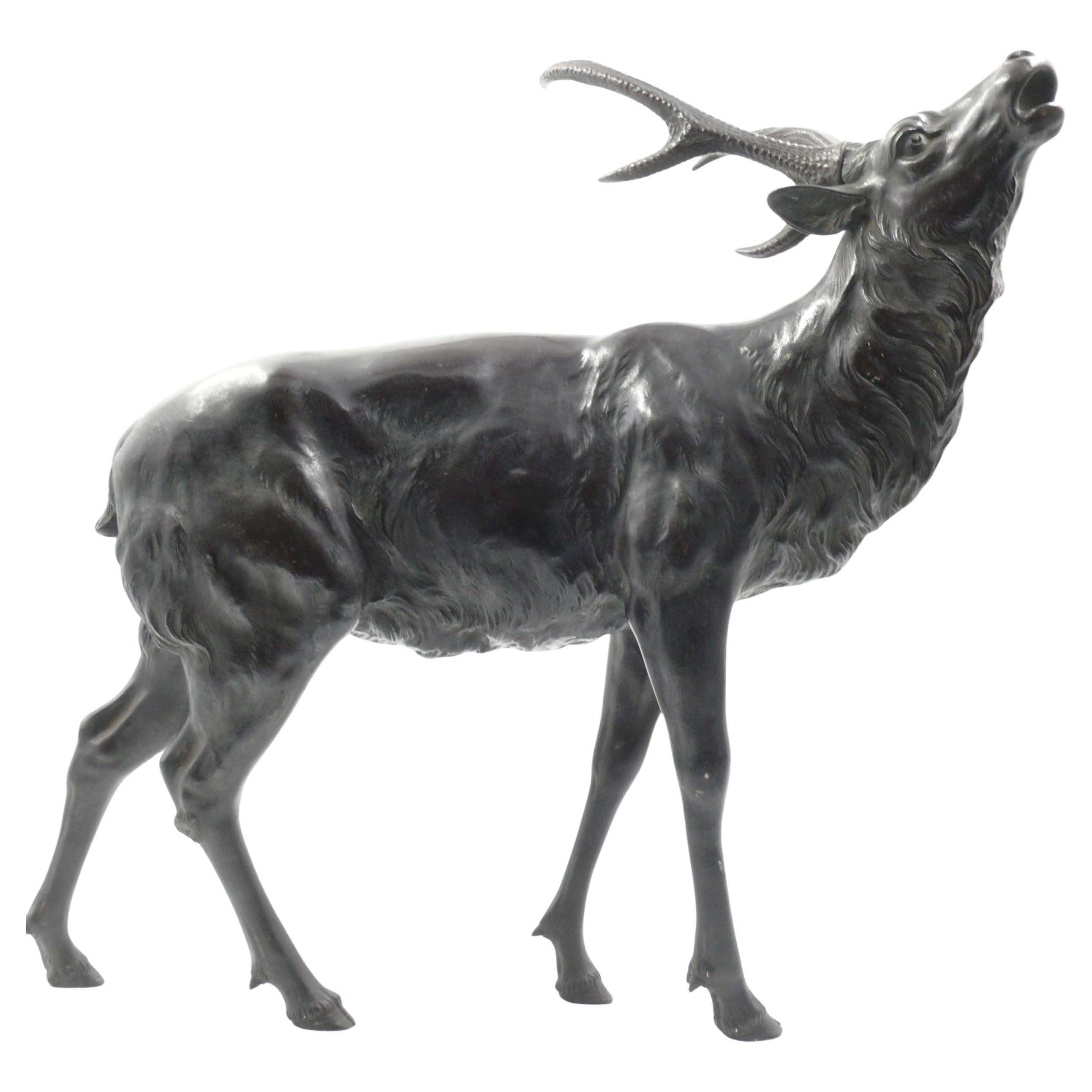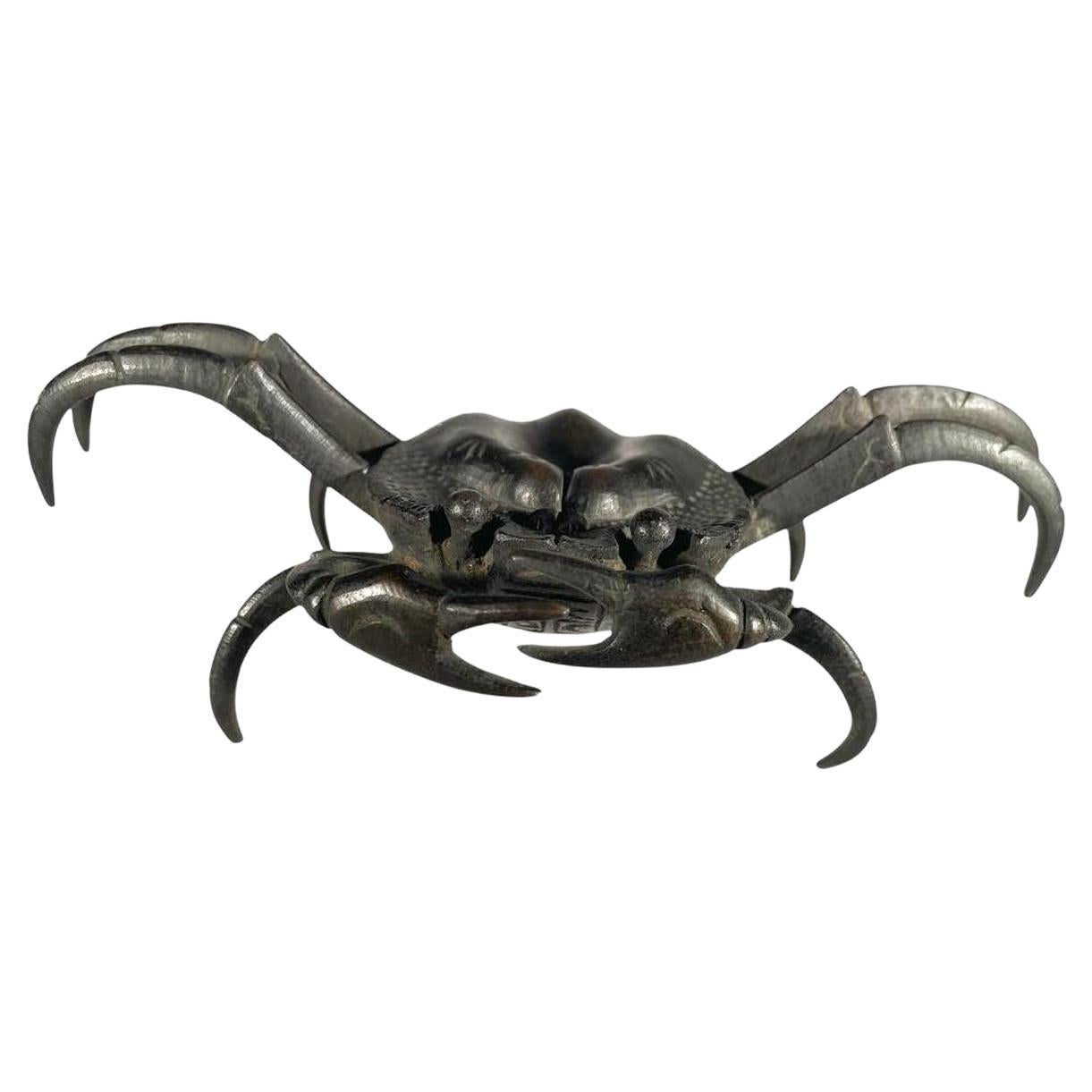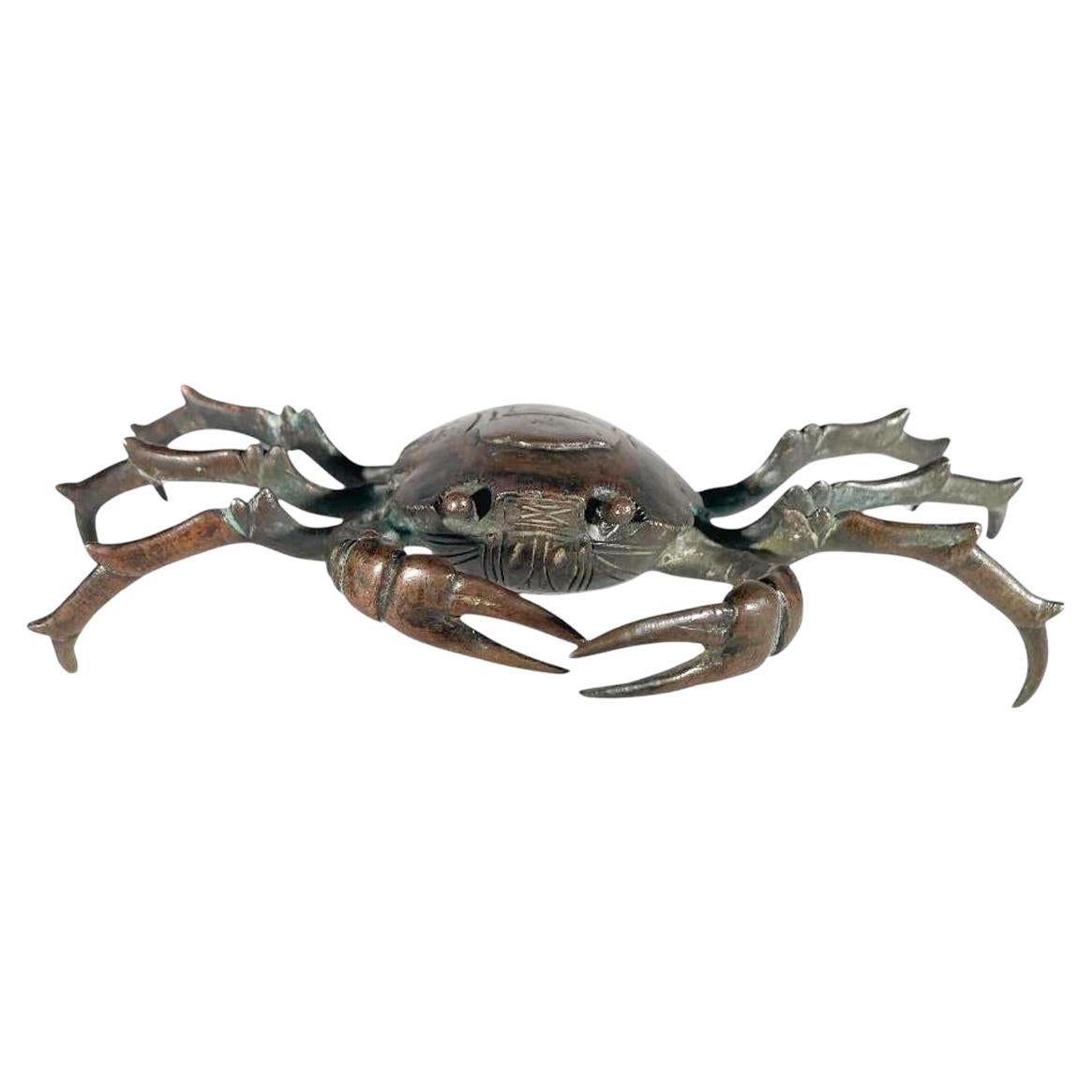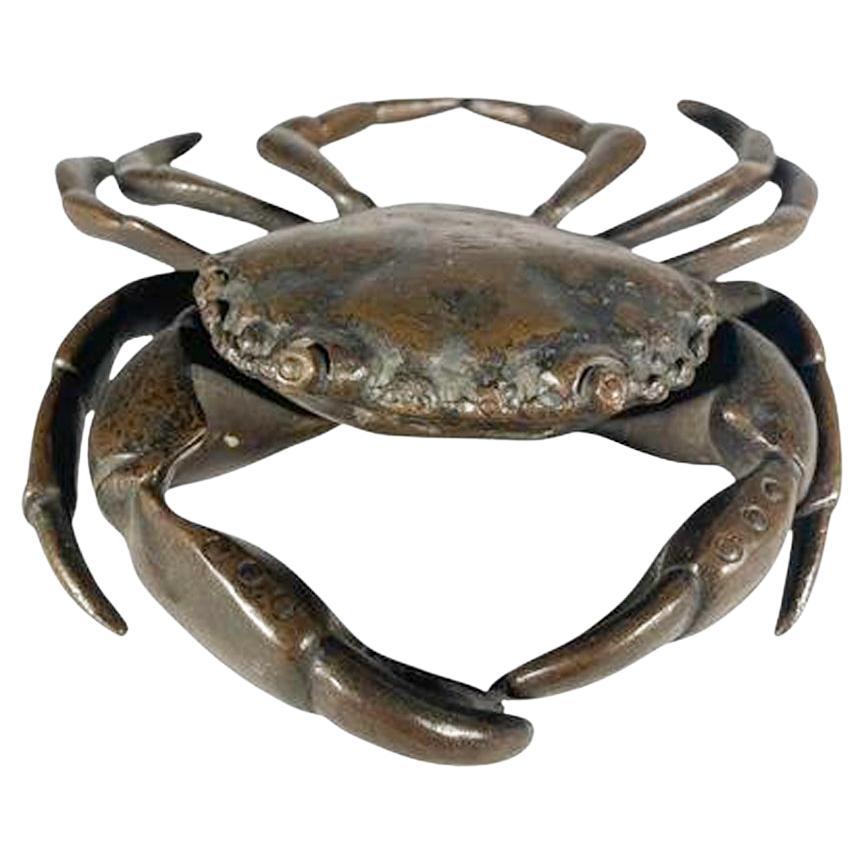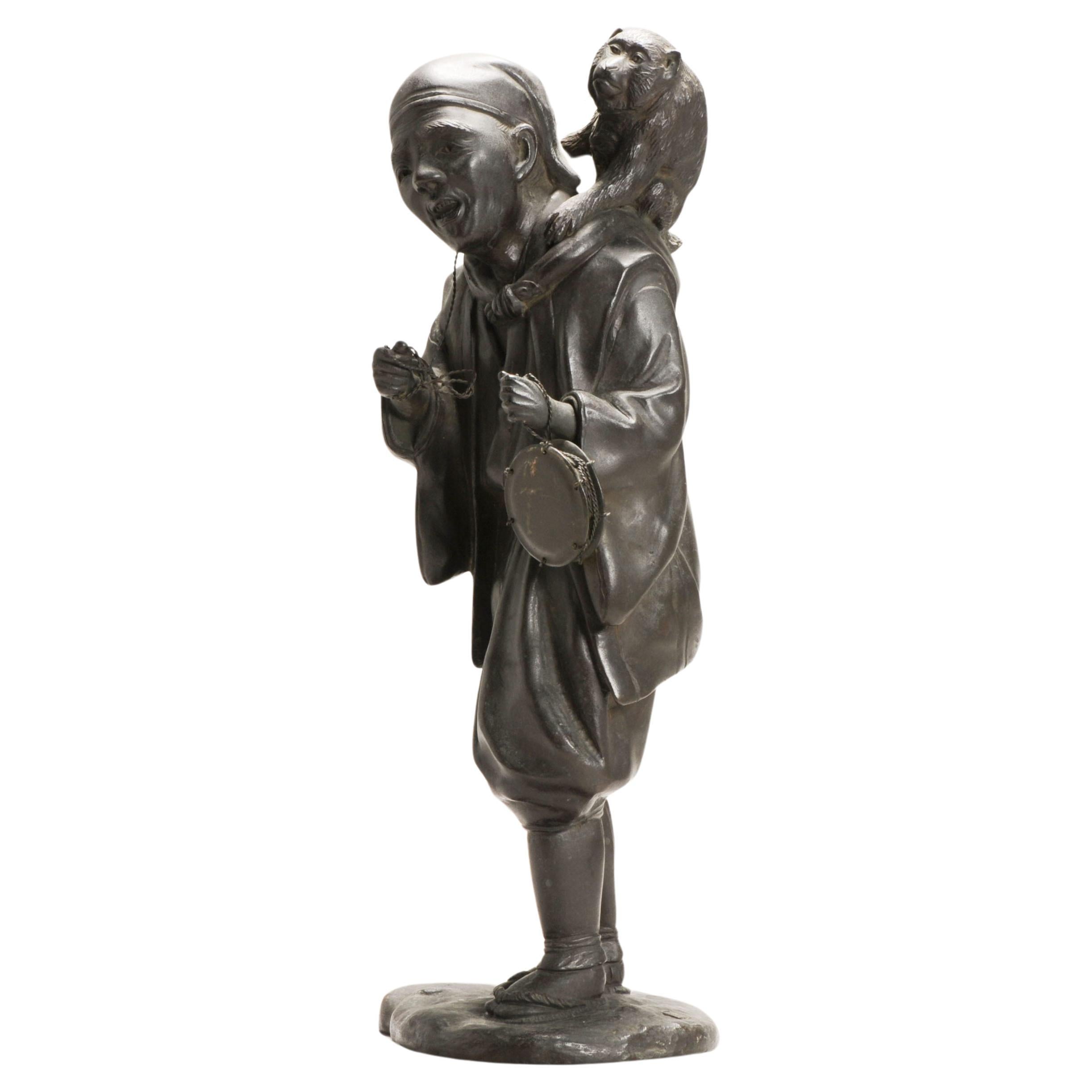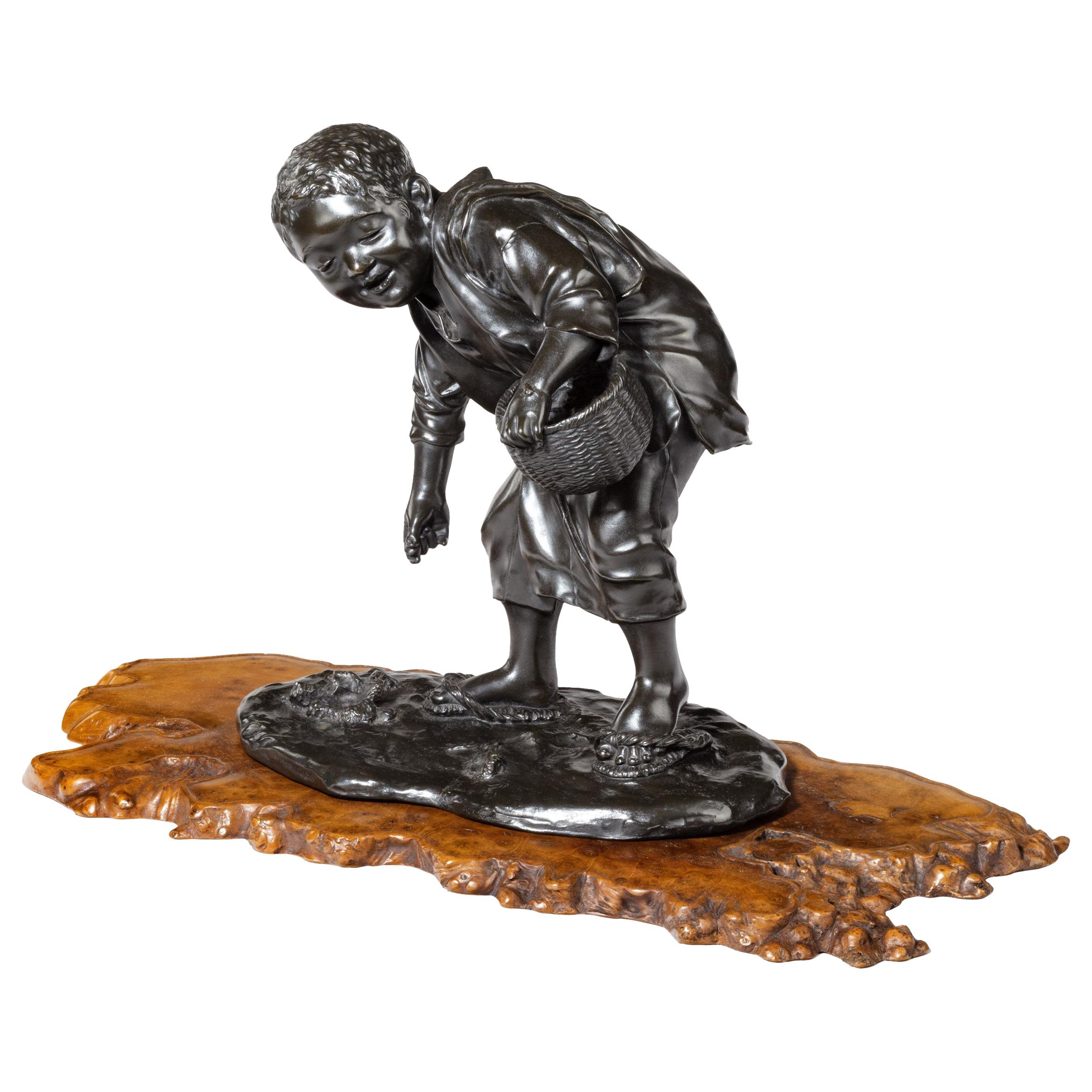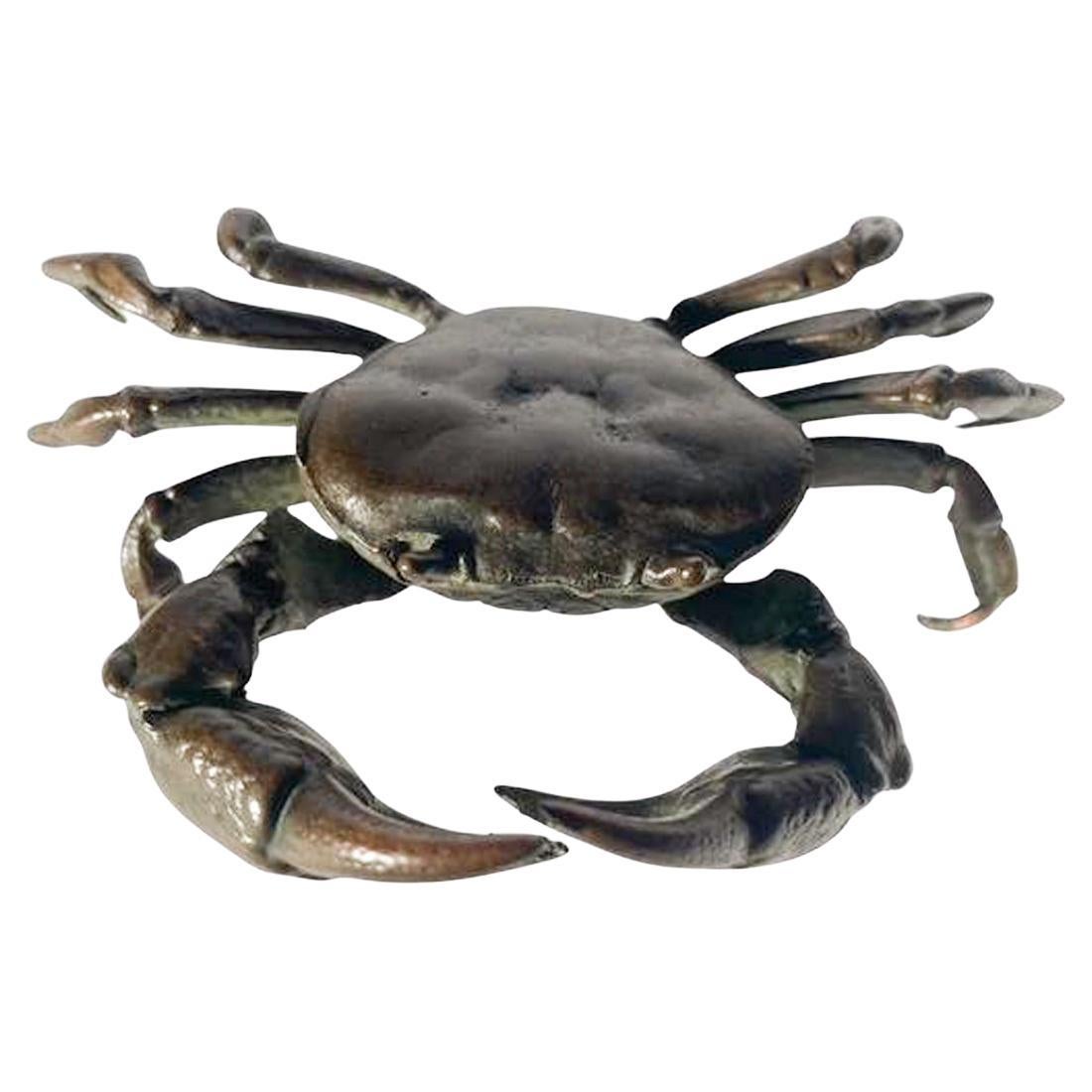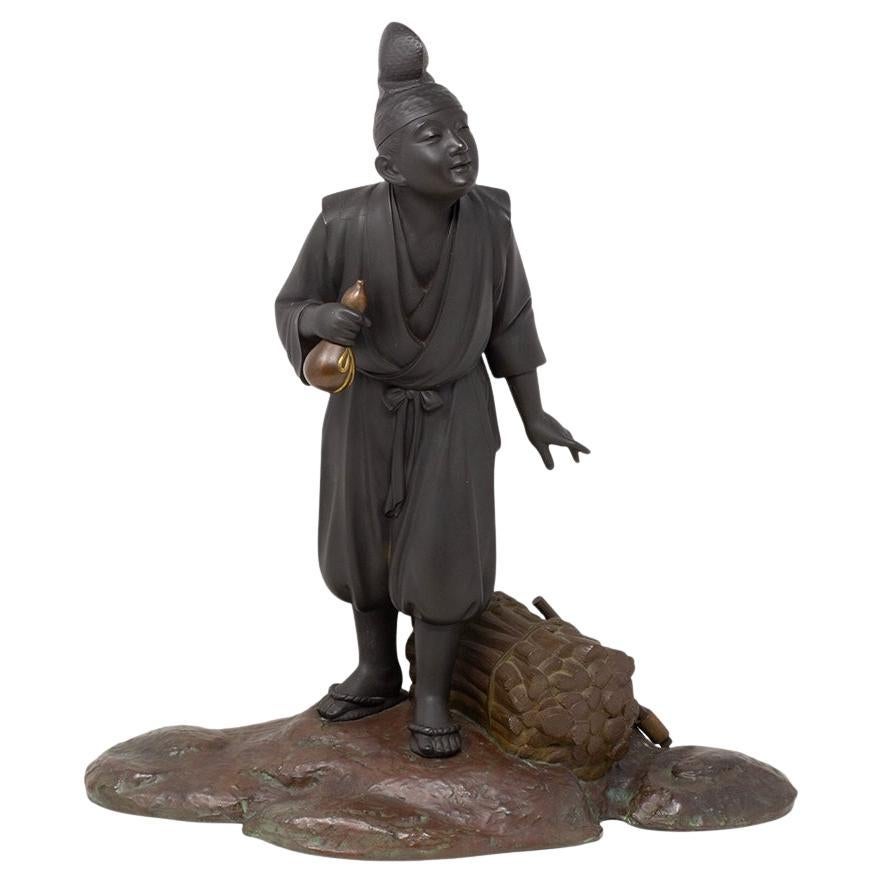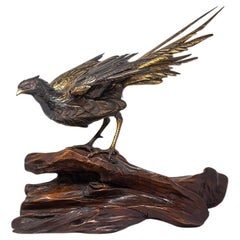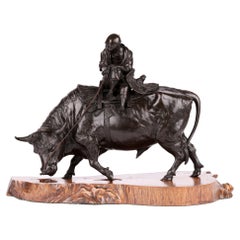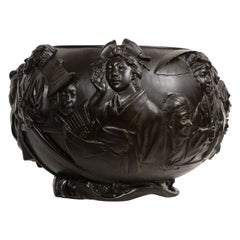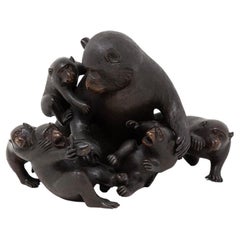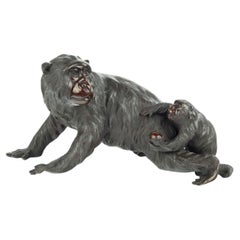
Large Japanese Bronze Monkey Okimono – Genryusai Seiya
View Similar Items
Video Loading
1 of 11
Large Japanese Bronze Monkey Okimono – Genryusai Seiya
$15,316.37List Price
About the Item
- Creator:Genryusai Seiya (Maker)
- Dimensions:Height: 9.5 in (24.13 cm)Width: 20 in (50.8 cm)Depth: 12 in (30.48 cm)
- Style:Meiji (Of the Period)
- Materials and Techniques:
- Place of Origin:
- Period:
- Date of Manufacture:1868-1912
- Condition:Wear consistent with age and use.
- Seller Location:Christchurch, GB
- Reference Number:1stDibs: LU8622235715022
Authenticity Guarantee
In the unlikely event there’s an issue with an item’s authenticity, contact us within 1 year for a full refund. DetailsMoney-Back Guarantee
If your item is not as described, is damaged in transit, or does not arrive, contact us within 7 days for a full refund. Details24-Hour Cancellation
You have a 24-hour grace period in which to reconsider your purchase, with no questions asked.Vetted Professional Sellers
Our world-class sellers must adhere to strict standards for service and quality, maintaining the integrity of our listings.Price-Match Guarantee
If you find that a seller listed the same item for a lower price elsewhere, we’ll match it.Trusted Global Delivery
Our best-in-class carrier network provides specialized shipping options worldwide, including custom delivery.You May Also Like
Japanese Bronze Pheasant Okimono Genryusai Seiya
Located in Newark, England
Unusual Casting of a Pheasant in Flight
From our Japanese collection, we are delighted to offer this Japanese bronze okimono of a Pheasant upon a naturalistic root wood base. The Ph...
Category
Antique Late 19th Century Japanese Meiji Sculptures and Carvings
Materials
Bronze
Genryusai Seiya Japanese Meiji Man & Water Buffalo Sculpture on Stand
Located in Bishop's Stortford, Hertfordshire
An exceptional Japanese Meiji bronze sculpture of a man and water buffalo on a natural polished oak stand by renowned Japanese master craftsman Genryusai Seiya and dating from around 1880/90. The large bronze depicts an elderly man holding a pipe and tobacco pouch...
Category
Antique 1880s Japanese Anglo-Japanese Sculptures and Carvings
Materials
Bronze
Meiji Japanese Bronze Jardinière Japanese People on a Boat, Genryusai Seiya Zo
Located in New York, NY
A masterpiece, rare, 19th Century Japanese bronze Jardinière/centerpiece of a group of Japanese travelers on a boat, signed on the bottom, Genryusai Seiya...
Category
Antique Early 1900s Japanese Meiji Metalwork
Materials
Bronze
Japanese Meiji Period Bronze Monkey Group Sculpture Okimono Shosai
Located in Newark, England
Featuring Seven Japanese Macaques
Form our Japanese collection, we are delighted to offer this Japanese Bronze Monkey Group by Shosai. The Japanese Bronze Group displaying a male father monkey and his infants playing around and being mischievous with Persimmon fruit. The monkeys modelled as Japanese macaque monkeys (snow monkey). The bronze okimono is beautifully patinated with a highly lifelike and naturalistic casting signed to the underside Shosai 正齊鋳. The Bronze group dates to the Meiji Period (1868-1912) circa 1885.
Japanese macaque (snow monkey) is a terrestrial Old World monkey species that is native to Japan. They are known as snow monkeys because some live in areas where snow covers the ground for long periods each year hence their nickname. No other non-human primate lives further north or in a colder climate than the snow monkey. Individuals have brownish grey fur, pinkish-red faces, and short tails. Two subspecies are known and their conservation Status is of least concern. In Japan, the species is known as Nihonzaru ニホンザル, 日本 (Japan/Nihon) and saru 猿 (monkey) to distinguish it from other primates, but the Japanese macaque is the only species of monkey in Japan.
The Japanese macaque features heavily in the religion, folklore, and art of Japan, as well as in proverbs and idiomatic expressions in the Japanese language. They are often seen in paintings, block prints and represented in all manner of carvings from Okimono to netsuke. Many of these art forms reside in the world’s most famous museums and collections, some of the most prominent pieces by artists such as Mori Sosen and Kawanabe Kyosai. In Shinto belief (Japan’s indigenous religion/nature religion) legendary mythical beasts known as raiju sometimes appeared as monkeys and kept Raijin (the god of lightning/storms) company. In another well known tale the three wise monkeys who warn people to “see no evil, hear no evil and speak no evil” can be seen depicted in relief over the door of the famous Tosho-gu shrine in Nikko.
Meiji Period was an era of Japanese history that spanned from 1868 to 1912. It was the first half of the Empire of Japan, when the Japanese people began to build a paradigm of a modern, industrialised nation state and emergent great power, influenced by Western countries and aesthetics. As a result of radically different ideas, the changes to Japan were profound and it affected the social structure, politics, economy, military, and foreign relations across the board. The period corresponded to the reign of Emperor Meiji and was preceded by the Keio era and was succeeded by the Taisho era.
Cultural Art during the Meiji Period was of particular interest to the government and they overhauled the art export market which in turn promoted Japanese arts via various world’s fairs, beginning in Vienna at the world fair in 1873. The government heavily funded the fairs and took an active role organising how Japan’s culture was presented to the world including creating a semi-public company named Kiritsu Kosho Kaisha (First Industrial Manufacturing Company). The Kiritsu Kosho Kaisha was used to promote and commercialise exports of Japanese art and established the Hakurankai Jimukyoku (Exhibition Bureau) to maintain quality standards. For the 1876 Centennial International Exhibition in Philadelphia, the Japanese government created a Centennial Office and sent a special envoy to secure space for the 30,000 items that would be displayed. The Imperial Household also took an active interest in arts and crafts, commissioning works by select artists to be given as gifts for foreign dignitaries further emphasising the high quality and importance of Japanese art. Just before the end of the 19th century in 1890, the Teishitsu Gigeiin (Artist to the Imperial Household) system was created to recognise distinguished artists. These artists were selected for their exceptionally high quality wares and talent in their own industry. Over a period of 54 years Seventy artists were appointed, amongst these were ceramicist Makuzu Kozan and cloisonné enamel artist...
Category
Antique Late 19th Century Japanese Meiji Sculptures and Carvings
Materials
Bronze
Large Japanese Meiji Period Bronze Crab (A) Okimono
Located in Chapel Hill, NC
Large Japanese bronze okimono of a realistically modeled crab. This is one of 5 designated by the (A) in the title.
Category
Antique Late 19th Century Japanese Meiji Sculptures and Carvings
Materials
Bronze
Large Japanese Meiji Period Bronze Crab (C) Okimono
Located in Chapel Hill, NC
Realistically modeled Japanese okimono of a crab raised on its toes. I of 5 designated by the (C) in the title.
Category
Antique Late 19th Century Japanese Meiji Sculptures and Carvings
Materials
Bronze
Recently Viewed
View AllMore Ways To Browse
Genryusai Seiya
Meiji Bronze Monkey
Japanese Wood Temple
19th Century Wooden Statue
Boxwood Art
Antique White Jade
Japanese Carved Flower
Stone Lotus
Dog Carving
Large Buddha Hand
Chinese Wooden Carvings
Temple Door
Antique Indian Sculpture
Burmese Lacquer Furniture
Burmese Lacquer
Large Asian Carved Wood Sculptures
Japanese Birds Sculpture
Japanese Stone Sculpture
